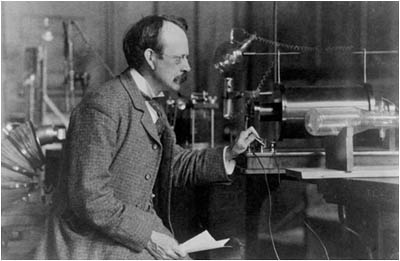
1897 English experimental physicist John Joseph Thomson discovered the electron, the first elementary particle, at Cambridge University's Cavendish Laboratory in 1897. He used a cathode ray tube to measure the charge/mass ratio of the cathode ray particles that we now know are electrons. Thomson was reportedly clumsy in the laboratory: "J.J. was very awkward with his fingers, an assistant wrote, "and I found it necessary not to encourage him to handle the instruments." But Thomson possessed quality that is critical for both experimenters and theorists in physics: an infallible sense of the next important scientific problem to attack.